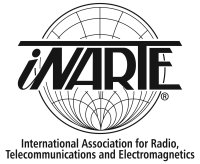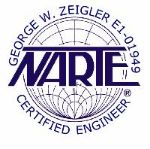Different Types of Grounding Designs
External Building Earth Ground System refers only to the method to externally ground a building. Normally used in conjunction with a Single Point Ground System.
Halo Ground System (HGS) is a grounding philosophy dictating that all non-electrical metallic components have short lengths of bonding conductors from non-surge producing metallic objects to the Halo Ground System (HGS) for personnel safety purposes. A Halo Ground System (HGS) is sometimes called an Internal Ground Ring System. The Halo Ground System (HGS) was once widely used within radio equipment rooms.
The Halo Ground System (HGS) usually consists of a #2 AWG minimum, non-insulated, solid or stranded wire routed around the inside perimeter walls of a building or room. The Halo Ground System (HGS) is usually connected at each corner of the building or room to an external earth ground electrode system via a separate grounding electrode conductor.
Lightning Rod System (LRS) is a method of placing a metallic rod higher than a building to draw lightning to it and directing it to earth. This system is used in conjunction with an External Building Earth Ground System.
Multiple Point Ground System (MPGS) is sometimes called an Integrated Ground System (IGS). A Multiple Point Ground System (MPGS) is a grounding philosophy dictating that all major components of the Building Safety Protection System be designed and bonded to as many ground components as possible. These components consist of grounding electrode conductors, grounding conductors, grounded conductors, and incidental connections. These grounding conductors and incidental connections are designed to create multiple paths of resistance/impedance. This allows any voltage level that will be produced as current to flow or return to its source along these multiple paths. This should reduce personnel safety hazards and protect the equipment.
The grounding conductors and their grounded components do not require isolation from any incidental contact with other grounding conductors or grounded components. The more multiplicity and incidental point of contact among different grounding conductors and components within the Multiple Point Ground System (MPGS), the better, because circuit ground loops are thus created.
Single Point Ground System The Single Point Ground System (SPGS) is a grounding philosophy that requires all major components of the Building Safety Protection System to be designed and bonded to a single ground reference point. These components consist of ground electrodes, grounding electrode conductors, grounded conductors, and grounding conductors. These conductors are designed to create the path of least resistance/impedance. This allows any voltage produced as current to flow or return to its source along the proper designated path.
Carrying out the Single Point Ground System (SPGS) philosophy is simple yet very complex. The designated grounding conductors are methodically connected throughout the Building Safety Protection System within designated areas to the single ground reference point, the Master Ground Bar (MGB).
Grounding conductors and their grounded components must be isolated from any unintended contact with other grounding conductors and grounded components except at the single ground reference point, the Master Ground Bar (MGB). Any unintended points of contact among different grounding conductors and components create ground loops within the Single Point Ground System (SPGS) and are violations of the Single Point Ground System (SPGS).
The Single Point Ground System (SPGS) identifies each conductor on the ground bar by the type of conductor or the type of job the conductor is intended to do. The system is called the PANI system. The bar is divided up into sections and only one type to conductor is placed in that section of the ground bar. The following are some descriptions for conductors. Each conductor will then be placed within its proper section of the ground bar from left to right. Examples all the P's, all the A's, all the N's and then all the I's.
(P) - Surge Producers
Radio Frames
Telephone Cable Entrance Ground Bar (CEGB)
Telephone Cable Entrance Shields
Transformer Frame Inside Building
(A) - Surge Absorber
AC Power Entrance Multi-Grounded Neutral (MGN)
Building Earth Ground System (BEGS)
Building Structural Steel (BSS)
Isolated AC Equipment Ground (ACEG)
Metallic Conduit System
Well Casing
(N) - Non-Isolated Ground Plane (NON-IGP) Equipment Grounds
Intra Office Cable Shield Bar (IOCSB)
Intra Office Cable Shields
Main Distribution Frame (MDF)
(-) Reference in a DC Power Plant with Negative Ground
(+) Reference in a DC Power Plant with Positive Ground
Storage Cabinets
Transmission Frames
Work Benches
(I) - Isolated Ground Plane (IGP) Equipment Grounds
Isolated Ground Plane AC Equipment Ground (ACEG)
Isolated Ground Plane Cable Runways
Isolated Ground Plane Frame Return Bar (IGP-FRB)
Isolated Ground Plane Logic Return Bar (IGP-LRB)
Isolated Ground Plane Metallic Conduit System
The Isolated Ground Plane Bar (IGPB) should be clearly stenciled or labeled and insulated from its support within the Isolated Ground Plane (IGP)
This Isolated Ground Plane Bar (IGPB) becomes a "window" to the actual Master Ground Bar (MGB). The Isolated Ground Plane Bar (IGPB) MUST have a properly routed, bonded and sized grounding conductor connected directly to the Master Ground Bar (MGB).
Isolated Ground Plane (IGP) areas should be clearly and permanently marked on the floor or in another easily recognizable manner. Paint or tape of a distinctive color such as orange is appropriate.
The intent of an Isolated Ground Plane (IGP) is to isolate all voltage-sensitive equipment inside the Isolated Ground Plane (IGP) from any voltage event occurring outside the Isolated Ground Plane (IGP). This will prevent any event outside the Isolated Ground Plane (IGP) from causing any form of service outage to the voltage-sensitive equipment inside the Isolated Ground Plane (IGP).
Most buildings use an Isolated Ground Plane (IGP) for isolating voltage-sensitive equipment, such as a digital switch, from the rest of the equipment within the building.
Ufer Ground System is a grounding philosophy used by the National Electrical Code (NEC) for the Grounding Electrode System. All grounding electrodes surrounding the building or structure served shall be bonded together to form the Grounding Electrode System.
The grounding electrode conductor may be routed to any convenient grounding electrode available in the Grounding Electrode System. The main grounding electrode conductor is to be sized for the largest grounding electrode conductor required among all available ground electrodes.
This grounding electrode conductor may be spliced by either irreversible compression-type connectors listed for the purpose or an exothermic welding process.





